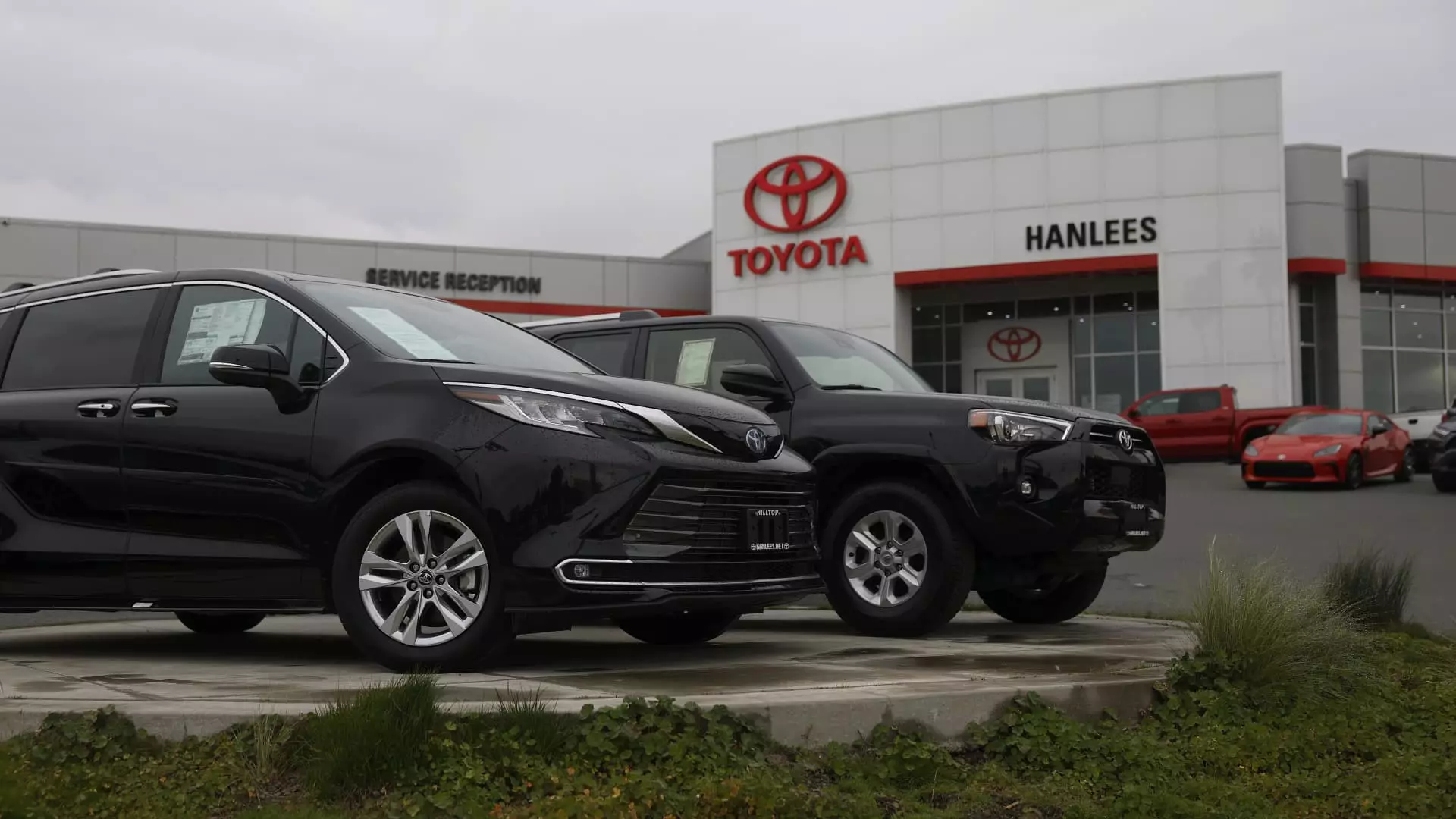The recent imposition of hefty 25% tariffs on auto imports by the U.S. government has unleashed a tidal wave of uncertainty across the automotive landscape. Announced last Wednesday by President Donald Trump, these tariffs target vehicles “not made in the U.S.,” sending shockwaves through global markets, particularly affecting Asian automakers. The implications are profound, raising questions about the sustainability of the companies deeply rooted in the North American market, which has long been a cornerstone of their revenue streams.
The drops in stock values following the announcement were staggering. For instance, Toyota, the titan of the automotive industry, witnessed a steep decline of 9.4%. This was compounded by a staggering drop of 11.2% for Hyundai and nearly 9.3% for Nissan during just three trading days. Such dramatic shifts illustrate just how reliant these companies are on the U.S. market, a reality that leaves them vulnerable to drastic policy changes.
The Reality of Market Dependence
With Asian manufacturers collectively dominating the U.S. sales charts—six of the top eight automakers by sales volume are from Asia—it’s clear they cannot afford such upheavals. In 2024 alone, the automotive marketplace reported Toyota leading with 1.98 million units sold, eclipsing domestic competitors like Ford and Chevrolet. The figures reveal a stark truth: these manufacturers generate a substantial portion of their revenue from the United States, leaving them without easy alternatives when faced with tariffs.
As Vivek Vaidya from Frost & Sullivan pointedly notes, the U.S. represents an indelible component of their business strategy. This reliance raises critical concerns about their operational future. Faced with such policy shifts, the pressure mounts on these automakers to quickly innovate or risk losing market share to domestic producers. However, this transition is not as simple or swift as merely adjusting prices or shifting production lines; it demands long-term commitment and investment, often amounting to billions.
Production Challenges and Economic Consequences
The idea that automakers can simply transition production to U.S.-based facilities is one fraught with logistical nightmares. Joe McCabe, CEO of AutoForecast Solutions, emphasizes that moving production is anything but an overnight fix. This complex reality underscores a harsh truth: the financial repercussions of these tariffs will ripple through supply chains and, ultimately, affect the consumer. With costs likely to rise due to the tariffs, the pressing question becomes — who ends up bearing this financial burden?
The prevalent assumption that car manufacturers will eat these costs is overly simplistic. The auto industry operates on narrow margins, and absorbing extra costs without passing them on to consumers could lead to dire financial consequences. For companies like Toyota and Nissan, which already have significant U.S. operations, expanding these facilities to offset tariffs is not a viable path. The struggle is not just about economics; it is about survival.
A Silver Lining Amidst Uncertainty?
Amidst the chaos, however, there is a glimmer of hope for select players in the automotive sector. Richard Kaye, a portfolio manager, highlights Suzuki as a potential outlier in this tumultuous landscape. Unlike its peers, Suzuki has refrained from entering the U.S. market, thus insulating itself from the repercussions of these tariffs. With a year-to-date increase of over 1% in share value, Suzuki presents an example of how business strategies aligned with market conditions can circumvent the storm.
This reality poses a difficult dilemma for other automakers: adapt and innovate swiftly to minimize losses, or face the impending doom of dwindling market relevance. Japanese companies are especially vulnerable, and while Toyota may be best equipped to navigate these turbulent waters, no firm will emerge unscathed.
The consequences of these tariffs will reverberate through the entire industry, influencing everything from pricing strategies to consumer choices. As the dust settles, the only certainty is that the landscape of the auto industry has forever changed, and the ramifications of these decisions will unfold in ways we have yet to fully understand.



Leave a Reply